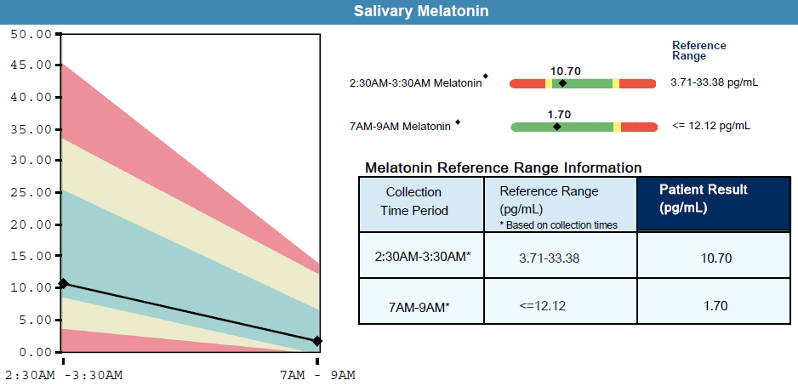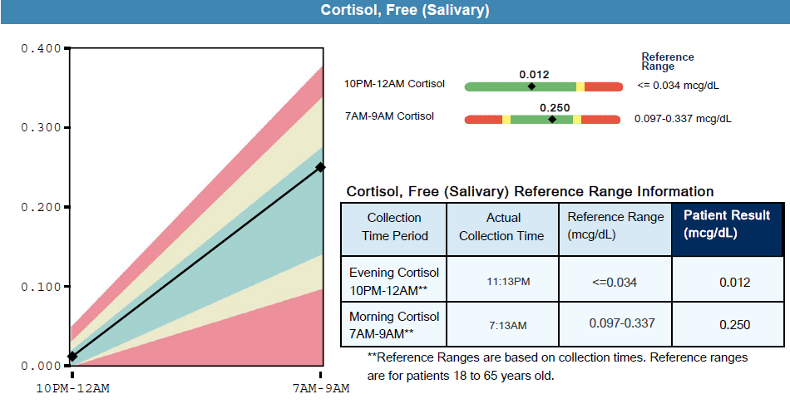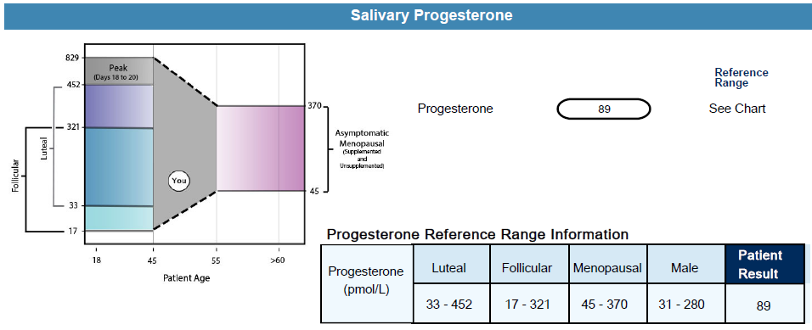We use cookies to enhance your browsing experience and analyze the performance of our website. By clicking Continue, you agree to the use of cookies. For more information, please see our Privacy Policy or update your Cookie Preferences.


Struggling to fall asleep, waking up tired, or craving more energy? Your Sleep Assessment reveals the key hormones that drive your sleep-wake cycle so you can target the root causes of poor rest. In this guide, we'll walk you through each section of your report, show you what the numbers mean, and explain how to use this insight to sleep better and feel more refreshed.

Your report starts with a Functional Imbalance Score (1-10) that summarizes your overall hormone balance for sleep.
Next to your score, you'll see a standard list of therapeutic suggestions to discuss with your provider. Think of it as a starting point for improving sleep health.

Melatonin signals your body that it's time to sleep. Your report shows two measurements:
Green = optimal peak/timing. Yellow or red highlights when levels are too low (trouble falling asleep) or too high (daytime sleepiness). Use the commentary to explore possible causes like light exposure, medications, or nutrition.

Cortisol helps you wake up and stay alert, then should taper off by bedtime. Your graph plots:
A smooth curve - low at night, high in the morning - is ideal.1 Borderline or high nighttime cortisol can make it hard to fall asleep; low morning cortisol can leave you dragging. Check your collection times and compare your pattern to the reference curve to see where adjustments are needed.

Progesterone has natural calming effects. Your report shows a single morning measurement. Compare your result against the mentrual phase at the time of collection or sex-specific range in the "Reference Range" box.
Females will see an additional chart that shows life span from left to right and how progesterone tends to decline with age. The vertical axis shows the healthy range and the horizontal axis shows age.
Low progesterone can make sleep fitful while high levels might cause daytime drowsiness. Use the chart to see how your result compares by age and cycle phase.
Your Sleep Assessment is a roadmap and provides some information on why your hormones (melatonin, cortisol or progesterone) may be out of balance. Work with your healthcare provider to:
Calming supplements like l-theanine, passionflower, GABA, magnesium, phosphatidylserine, and others can help.78910 Those with low melatonin or progesterone may benefit from hormone replacement. It's important to check with your healthcare practitioner to choose the best program for your unique needs.

You can take the same test featured in this article from the comfort of your home.
Use the Sleep Assessment to pinpoint the hormonal root-cause of your insomnia with an at-home saliva test and finally wake up refreshed.
Addressing the root cause, rather than masking symptoms with a quick supplement fix, is what restores healthy sleep. Elevated, stress-driven cortisol is one of the most common imbalances. By reducing stressors, you can bring cortisol, progesterone, and melatonin back into harmony. Share results with your provider and turn insights into a personalized plan.
When you treat the source, deep, restorative sleep moves from a distant dream to your new reality.
This article is for educational purposes and not medical advice. Always consult a qualified healthcare provider.